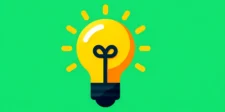Do you need some guidance for your welcome email sequence? If so, you came to the right place. Business owners tend to either love or hate email marketing, and there’s not much in between.
But those who hate it tend to have had bad experiences with it. They don’t understand why, after all the statistics and case studies proved the impact of email marketing, it isn’t working for them.
Why, after all the time they dedicated to creating email content, it amounted to nothing.
It can be incredibly frustrating. But the good news is (although it may be tricky to see it as good news right now) it’s not email marketing as a whole — it’s your approach to email marketing.
Yes, it can be a difficult pill to swallow. However, you now know that you can do something about it and gain the results you dreamed of when you first decided to invest in email marketing.
Your email marketing journey starts with your welcome sequence, so it needs to be pure gold. This article will teach you what a welcome sequence does, what you need to know before you start typing, and what goes in each email in your welcome sequence.
What Is a Welcome Sequence in Email Marketing?
A welcome sequence is a series of emails that are activated by a trigger. Usually, this trigger is “when someone joins your email list.” These emails are then sent automatically, and you can tailor how long you wait between each email.
You can set up your welcome sequence on any email marketing platform. However, you can’t rely on Gmail or any other “ordinary” email platform. It needs to be specifically geared up towards email marketing, like MailChimp, for example.
What Does a Welcome Sequence Do?
A welcome sequence is so much more than just introducing yourself. When done properly, a welcome sequence is a pivotal part of your email marketing strategy.
But before you start creating your welcome sequence, you must understand your end goal.
The welcome sequence isn’t predominantly about selling. Rather, it’s about nurturing your leads to make it more likely they’ll convert when presented with offers. That said, your welcome sequence should end with some sort of promotion.
And the type of offer you put forward in your welcome sequence will depend on your industry and brand. It must align with your overall business goals. Some examples are:
- A complimentary 1:1 call
- Free PDFs
- An upsell (specifically effective if you have a sales funnel)
- A coupon/discount on a product or service
What You Need to Know Before You Start Writing Your Welcome Sequence
Before you start creating the content for your welcome sequence, there are a few things you need to do first.
Initially, you need to create a lead magnet that will entice the right audience to sign up for your email list. This lead magnet should be something that can be used instantly. For example:
- A guide
- A quiz
- An infographic
- A webinar
- A discount (effective for product-based businesses)
Essentially, you can use anything as a lead magnet. The key is to ensure you write a lead magnet that answers a question your audience is asking or solves a problem.
Say, for example, you ran a hair salon. During extensive research, you discovered that a predominant problem amongst your audience was keeping their blonde hair blonde rather than fading into a copper color. Your lead magnet could then explain how to do this.
To reiterate, you must also know what your end offer is so it can shape your welcome sequence.
Finally, think carefully about audience segmentation. This is one of the key benefits of email marketing, as it adds another layer of personalization to your strategy.
For each segment, you’ll need a different lead magnet that matches and solves a specific problem. The email sequences will alter from segment to segment, so before you begin, you need to know how many welcome sequences you need to create.
How Many Emails Should be in a Welcome Sequence?
Although it’s highly dependent on your niche and/or industry, generally, you should have between four and six emails in your welcome sequence.
While you need an overall goal for the welcome sequence, you also need to assign specific goals for every email. Assign key performance indicators that will measure whether your emails are or aren’t performing.
A Framework For Your Welcome Sequence
So, where do you start? What goes in each email inside your welcome sequence? Let’s break it down, email by email.
Email One: Welcome
Your first email surrounds welcoming your lead to the email list. This is often done when you’re delivering your lead magnet. It’s concise but warm and friendly, written in your brand’s tone of voice. Essentially, this email delivers on your promise when the lead signs up.
Email Two: Show What Problem You Solve
In your second email, you’ll need to explain that you solve your audience’s problem. This is a chance to empathize, so make sure you’re focusing on building trust. It shouldn’t be a hard-selling email.
Remember, the reader has only just received one email from you so far. They will need longer to build a relationship with your brand and determine trust. So, storytelling is a great technique for this stage.
Email Three: Show Empathy, Reduce Guilt
Moving on from email two, where you explain what problem you solve, you now need to build empathy on a deeper level. Take the “it’s not your fault” approach, whereby you alleviate the guilt for not solving the problem themselves.
Tell a story about how you have experienced the problem yourself, gently positioning your product or service as a discovery, which could be their solution.
Email Four: Outline Your Benefits
Emails four and five are where the magic happens. Up until now, you’ve been using soft-selling techniques. You should ramp things up to a hard sell in the next two emails.
You don’t necessarily need to be “selling” something that costs money. You could be pushing for the reader to download a different freebie. Or, perhaps even booking a 1:1 call. However, you’re still trying to get a “yes,” meaning it can be measured in terms of conversion.
This email should outline the benefits of your offer. We’ve already explained that we understand the problem the reader is experiencing, and we’ve been in their position before. We’ve also hinted toward our offer being the solution. So, now’s your chance to dive into the benefits of the offer.
Email Five: Create a Sense of Urgency
At this point, this is your last opportunity to get a ‘yes’ from your reader. Email five needs to mention the same benefits as email four in a different way and give them an added bonus if they’ve yet to act. Including a countdown timer will help create a sense of urgency and activate impulse buying patterns.
Is a Welcome Sequence Worth It?
You only have one chance to make a first impression. Crafting a personalized and problem-solving welcome sequence does more than introduce your brand to leads. It shows them that you’re audience-focused and a fountain of knowledge. But most importantly, it clearly communicates that you can solve their problem with your services/products.
About the Author
Over the past decade, Liz Slyman has worked as a copywriter and digital marketing executive for a multitude of companies – from startups to mid-sized businesses to working as the VP of marketing for award-winning, platinum-selling artists.
This content is from a contributor and may not represent the views of Tech Help Canada.
Want a heads-up once a week whenever a new article drops?








